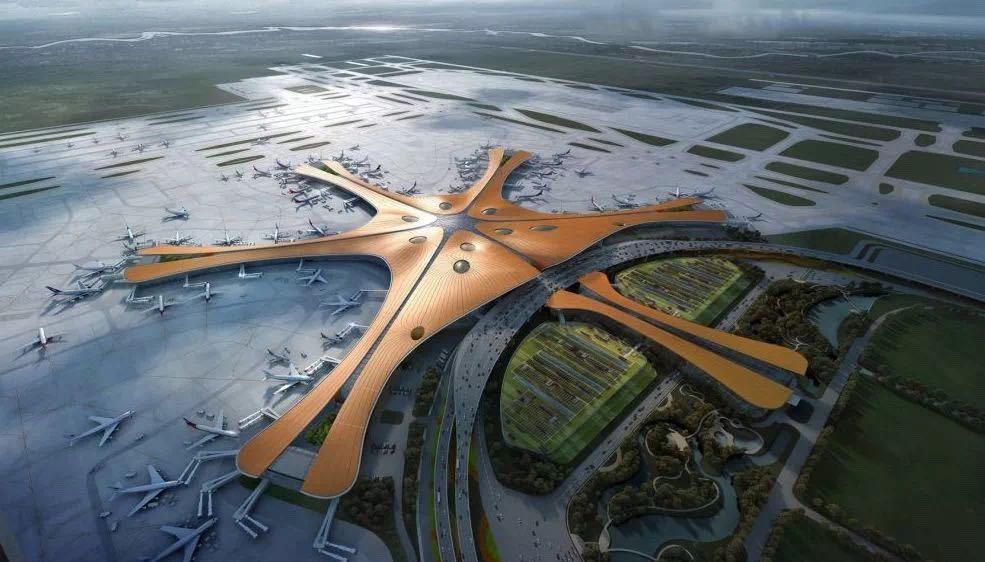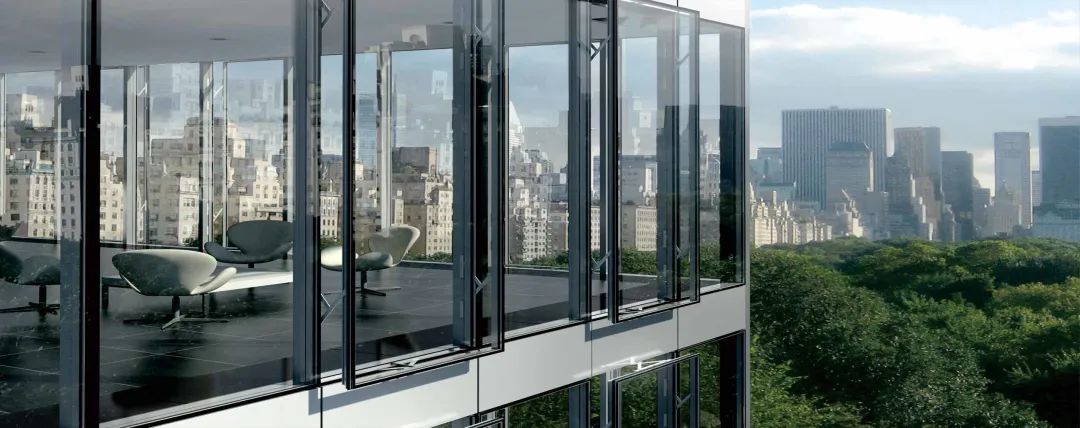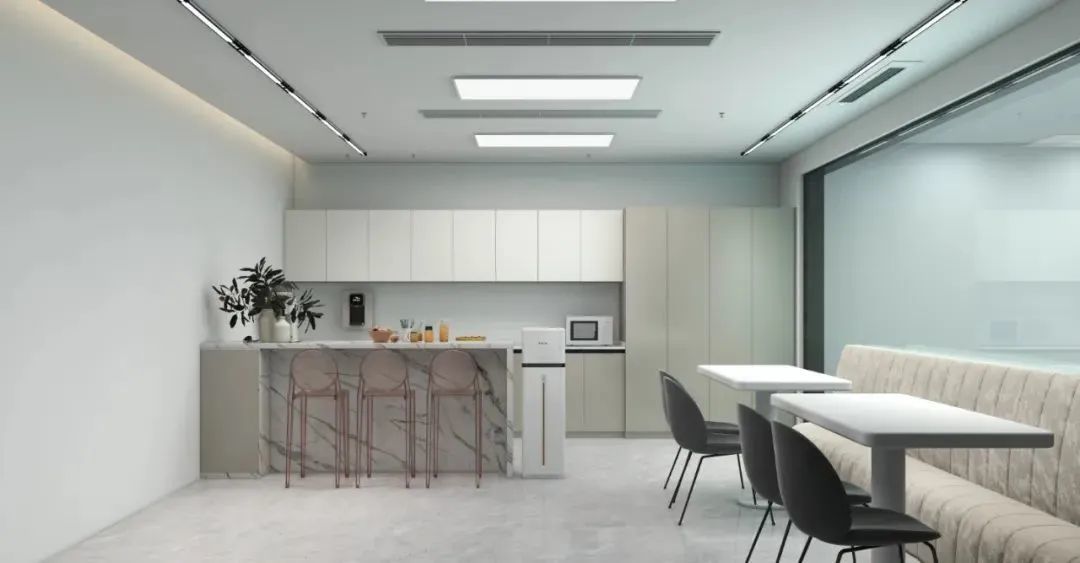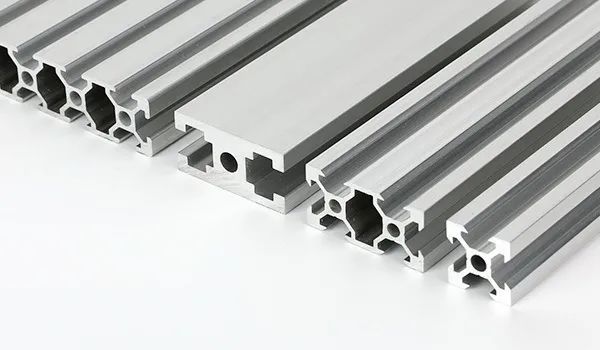Kemet Share | Five Precautions in the Production Process of Aluminum Extrusion Operation
Release time:
2021-05-19
According to the requirements of the production order and the actual situation of the mold, aluminum rods with appropriate length, correct material, smooth surface and no grooves, and guaranteed quality (crystallization, composition, density, and no overburning) must be installed.
1. Aluminum rod loading furnace
must be equipped with aluminum rods with appropriate length, correct material, smooth surface and no grooves, and guaranteed quality (crystallization, composition, density, and no overburning) according to the requirements of the production order and the actual situation of the mold. And pay attention to the identification and spacing of different aluminum rods. Pay attention to the furnace loading position and chain width, pay attention to close to each other and not loosen (use angle iron to block, do not use aluminum material that is easy to soften at high temperature) to prevent the furnace from being plugged, and pay attention to the aluminum rod not loosen and fall when handling the furnace loading and operation, so as to prevent personal injury and equipment accident. Frequently check the firmness of the chain, pin, runner, tension column and other equipment. Frequently detect the actual temperature of aluminum rod, the data of instrument value (not exceeding 560 degrees), properly cool down (below 520 degrees) when the downtime is long, and frequently check whether the equipment such as spray gun operation, circulating fan operation, cooling water (water pump) are in good condition.
2. Operating the extruder
The extruder operator must pay attention to the following matters before formal operation to ensure the normal, safe and continuous production.
(I) check whether the equipment is normal, whether the operating parts of the machine are in place, the lubrication of the sliding plate, whether the travel switch of the sensing device operates, whether the fasteners (screws) are loose, whether the circulating cooling water is on, whether the oil level is sufficient, whether the oil temperature is normal, whether the oil pump has abnormal noise, whether the working speed is normal, and whether the action conversion is normal.
(II) check the condition of the rod furnace (refer to Article 1), check the extrusion center line, check the heating condition of the extrusion cylinder, and the fluctuation of the heating instrument. Operation of tractor, material bed and rear equipment. Whether all kinds of operating tools and fittings repair hardware tools (mold, pad, pressing cake, pressing plate, clamp, hammer, pliers, wrench, screwdriver, screw knife, crowbar, heat insulation wool top, shaping tools, etc.) are fixed at the work site, whether the driving and mold heating furnace are normal. Whether all kinds of quenching cooling fans are running. Whether the various measuring tools are complete and correct.
(III) whether there are irrelevant and miscellaneous personnel, maintenance personnel, visitors and inspection personnel, and new learners on the site. According to the actual situation, relevant personnel shall be dissuaded, inquired, prompted, prevented, explained, trained, guided, demonstrated, etc. according to the principle of safety first, and confidential work shall be done for foreign personnel without leadership company when necessary. Coordinate production by schedule, team members, and pay attention to the orderly connection between various processes.
(IV) understand the production content, production requirements, production sequence, make corresponding real data records during production, write clearly, mark the production date, and make it verifiable, traceable, referential and quotable. The drawings, forms, materials, documents, etc. of the production profiles should be prepared in advance and well known in the chest.
3. Aluminum Profile Stretching
The aluminum profiles (I) on the cooling bed shall not rub, pull, overlap, crowd and entangle with each other during the process of reclaiming, moving and stretching, and a certain interval shall be reserved between them. For easy bending, the length of the material to deal with the timely processing, when necessary to do a good mutual protection treatment.
(II) profile stretching must be cooled below 50 degrees (bare hands can hold it tightly) before moving to the stretching frame for stretching work. If the temperature is too high, stretching will burn the human body and burn the tops. Moreover, absolute waste products such as bending, twisting and poor performance will occur before and after aging because the internal stress of the profile cannot be completely eliminated.
(III) because the wool top has the effect of resisting heat dissipation, the profiles with high decorative surface requirements must be turned up and down, so as to facilitate uniform heat dissipation and reduce the horizontal bright spot defects caused by uneven heat dissipation and different crystallinity, especially for large wide surfaces and thick wall profiles.
(IV) pay attention to the stress conditions of small feet, thin teeth, long legs, circular arc surface, inclined surface, opening, angle, etc. of profiles with high width-to-thickness ratio, long hanging wall, large radian, wide wall thickness, strange shape, etc., so as to prevent the occurrence of defects such as local or point size deformation, twisting, spiral, etc. of profiles.
(V) stretching amount is controlled at about 1%, for example, the stretching amount of 25M profile should be about 25CM after straightening the profile, but must not exceed 2%. Production should be adjusted according to the actual situation of profile material and various specific requirements (opening size, surface quality, shape size, inner diameter size, wall thickness size, elongation, etc.), and the tensile amount that can meet various specific requirements at the same time is sought in the contradictory technical requirements. Excessive stretching will produce head, middle and tail size deviation, surface water-like twist (fish scale) marks, low elongation, high hardness and brittleness (low plasticity). Too low tensile amount will make the compressive strength and hardness of the profile low, even aging (quenching) can not improve the hardness, the profile is easy to arc bending (commonly known as large knife bending).
(VI) In order to control the tensile deformation and better control the dimensional changes of the entire profile, appropriate special clamping pads and appropriate methods should be used. In particular, the opening material, arc material, cantilever material, and curved shape of the profile should pay more attention to the reasonable and effective use of the tensile clamp pad. If necessary, someone should control the centralizer or plug pad in the middle of the stretch profile to ensure that the extension size between the sections of the head, middle and tail meets the requirements of the profile.
4, aluminum profile sawing and framing
The material (I) on the conveying frame shall correspond to the material head and the joint mark, the profiles shall not rub against each other, and the long and short materials shall be protected from each other. The profile shall be straight forward and backward, and the cutting surface shall not be inclined. Check the packing conditions of the top and plastic parts on the rack surface, and pay attention to rubbing against sharp hard metals such as exposed iron frames.
(II) oxidation, spraying, sandblasting, round bending, punching, material, sawing, packaging, aging, natural materials, and other different post-processing requirements, profiles of different materials shall be framed and transported separately.
When framing (III), pay attention to the framing methods and methods, as well as necessary auxiliary tools, paper liners, etc. for long cantilever profiles, thin wall materials, arc materials, open materials, solid small section materials, plates, materials with high surface requirements, mutual buckling, self-buckling or profiles that are not easy to separate. The cushion strips (pads) should correspond to each other up and down, be arranged correctly, at appropriate intervals, and in appropriate quantity. (Some are easy to deform, and high-surface profiles cannot be placed with cushion strips) can bear the weight of the profile and a certain amount of force, and cannot be pushed or stacked too much. Profiles to be framed overhead must be stacked overhead.
(IV) pay attention to the position of the profiles stacked in the frame to avoid accidents such as stacking and slipping of the profiles due to the weight of both ends. Pay attention to the sawing speed, the burr of the sawing surface, and observe the oil injection size of the sawing machine to adjust. Pay attention to the pressure of the sawing machine (stroke, weight). Pay attention to the sawing operation to avoid personal safety injury. During sawing, it is strictly forbidden to exert force on the two outer sides of the profile, so as to avoid clamping and sawing the profile during sawing, which will cause material damage and personal injury in an instant.
(V) pay attention to blowing off aluminum chips, scraping off burrs, spacing properly, lifting safely, and aligning stacked frames. The number of stacked frames shall not exceed the number of 4 layers specified by the Company.
(VI) material lifting and framing should be handled with care. Small materials, thin materials, long materials, flat materials, solid small materials and other flexible materials should be carried by someone in the middle, and attention should be paid to whether doubling the length of cut length (sawing, oxidation chuck retention) will cause difficulty, affect efficiency and even fail to process and produce normally in the following processes (sawing, oxidation, packaging, lifting and transportation).
5, aluminum profile aging transfer
(I) aging as far as possible according to the material, thickness, size, hardness requirements, performance requirements of the same similar profiles placed in the same furnace for aging treatment. The aging profile shall be strictly operated according to the corresponding aging process of the furnace profile, and shall not be changed without authorization or perfunctory.
(II) pay attention to the operation of circulating fan and circulating cooling water, pay close attention to the ignition and heating, the temperature rise error in the furnace, the temperature rise speed in the furnace, the heat preservation, and pay attention to the safety and sealing of the furnace door.
(III) Pay attention to oil and gas leakage, ventilation and safety under high temperature combustion environment.
(IV) lift the loading and unloading frame, pay attention to the falling material, and pay attention to the safe distance between the driving and the frame and itself.
It is strictly forbidden to stay in the (V) aging furnace. When entering the furnace for operation, corresponding protection must be done, and adults must be observed and protected outside. The introduction of combustible and explosive materials into the furnace is prohibited, and it is strictly prohibited to be used for non-productive purposes such as baking, heating and sleeping.
Profiles (VI) different post-processing requirements shall not be combined and framed, and shall be transferred to each production department together with the process card (manufacturing summons) according to the post-processing requirements. Record all forms of the process truthfully for verification. The shift change should be made clear in person.
must be equipped with aluminum rods with appropriate length, correct material, smooth surface and no grooves, and guaranteed quality (crystallization, composition, density, and no overburning) according to the requirements of the production order and the actual situation of the mold. And pay attention to the identification and spacing of different aluminum rods. Pay attention to the furnace loading position and chain width, pay attention to close to each other and not loosen (use angle iron to block, do not use aluminum material that is easy to soften at high temperature) to prevent the furnace from being plugged, and pay attention to the aluminum rod not loosen and fall when handling the furnace loading and operation, so as to prevent personal injury and equipment accident. Frequently check the firmness of the chain, pin, runner, tension column and other equipment. Frequently detect the actual temperature of aluminum rod, the data of instrument value (not exceeding 560 degrees), properly cool down (below 520 degrees) when the downtime is long, and frequently check whether the equipment such as spray gun operation, circulating fan operation, cooling water (water pump) are in good condition.
2. Operating the extruder
The extruder operator must pay attention to the following matters before formal operation to ensure the normal, safe and continuous production.
(I) check whether the equipment is normal, whether the operating parts of the machine are in place, the lubrication of the sliding plate, whether the travel switch of the sensing device operates, whether the fasteners (screws) are loose, whether the circulating cooling water is on, whether the oil level is sufficient, whether the oil temperature is normal, whether the oil pump has abnormal noise, whether the working speed is normal, and whether the action conversion is normal.
(II) check the condition of the rod furnace (refer to Article 1), check the extrusion center line, check the heating condition of the extrusion cylinder, and the fluctuation of the heating instrument. Operation of tractor, material bed and rear equipment. Whether all kinds of operating tools and fittings repair hardware tools (mold, pad, pressing cake, pressing plate, clamp, hammer, pliers, wrench, screwdriver, screw knife, crowbar, heat insulation wool top, shaping tools, etc.) are fixed at the work site, whether the driving and mold heating furnace are normal. Whether all kinds of quenching cooling fans are running. Whether the various measuring tools are complete and correct.
(III) whether there are irrelevant and miscellaneous personnel, maintenance personnel, visitors and inspection personnel, and new learners on the site. According to the actual situation, relevant personnel shall be dissuaded, inquired, prompted, prevented, explained, trained, guided, demonstrated, etc. according to the principle of safety first, and confidential work shall be done for foreign personnel without leadership company when necessary. Coordinate production by schedule, team members, and pay attention to the orderly connection between various processes.
(IV) understand the production content, production requirements, production sequence, make corresponding real data records during production, write clearly, mark the production date, and make it verifiable, traceable, referential and quotable. The drawings, forms, materials, documents, etc. of the production profiles should be prepared in advance and well known in the chest.
3. Aluminum Profile Stretching
The aluminum profiles (I) on the cooling bed shall not rub, pull, overlap, crowd and entangle with each other during the process of reclaiming, moving and stretching, and a certain interval shall be reserved between them. For easy bending, the length of the material to deal with the timely processing, when necessary to do a good mutual protection treatment.
(II) profile stretching must be cooled below 50 degrees (bare hands can hold it tightly) before moving to the stretching frame for stretching work. If the temperature is too high, stretching will burn the human body and burn the tops. Moreover, absolute waste products such as bending, twisting and poor performance will occur before and after aging because the internal stress of the profile cannot be completely eliminated.
(III) because the wool top has the effect of resisting heat dissipation, the profiles with high decorative surface requirements must be turned up and down, so as to facilitate uniform heat dissipation and reduce the horizontal bright spot defects caused by uneven heat dissipation and different crystallinity, especially for large wide surfaces and thick wall profiles.
(IV) pay attention to the stress conditions of small feet, thin teeth, long legs, circular arc surface, inclined surface, opening, angle, etc. of profiles with high width-to-thickness ratio, long hanging wall, large radian, wide wall thickness, strange shape, etc., so as to prevent the occurrence of defects such as local or point size deformation, twisting, spiral, etc. of profiles.
(V) stretching amount is controlled at about 1%, for example, the stretching amount of 25M profile should be about 25CM after straightening the profile, but must not exceed 2%. Production should be adjusted according to the actual situation of profile material and various specific requirements (opening size, surface quality, shape size, inner diameter size, wall thickness size, elongation, etc.), and the tensile amount that can meet various specific requirements at the same time is sought in the contradictory technical requirements. Excessive stretching will produce head, middle and tail size deviation, surface water-like twist (fish scale) marks, low elongation, high hardness and brittleness (low plasticity). Too low tensile amount will make the compressive strength and hardness of the profile low, even aging (quenching) can not improve the hardness, the profile is easy to arc bending (commonly known as large knife bending).
(VI) In order to control the tensile deformation and better control the dimensional changes of the entire profile, appropriate special clamping pads and appropriate methods should be used. In particular, the opening material, arc material, cantilever material, and curved shape of the profile should pay more attention to the reasonable and effective use of the tensile clamp pad. If necessary, someone should control the centralizer or plug pad in the middle of the stretch profile to ensure that the extension size between the sections of the head, middle and tail meets the requirements of the profile.
4, aluminum profile sawing and framing
The material (I) on the conveying frame shall correspond to the material head and the joint mark, the profiles shall not rub against each other, and the long and short materials shall be protected from each other. The profile shall be straight forward and backward, and the cutting surface shall not be inclined. Check the packing conditions of the top and plastic parts on the rack surface, and pay attention to rubbing against sharp hard metals such as exposed iron frames.
(II) oxidation, spraying, sandblasting, round bending, punching, material, sawing, packaging, aging, natural materials, and other different post-processing requirements, profiles of different materials shall be framed and transported separately.
When framing (III), pay attention to the framing methods and methods, as well as necessary auxiliary tools, paper liners, etc. for long cantilever profiles, thin wall materials, arc materials, open materials, solid small section materials, plates, materials with high surface requirements, mutual buckling, self-buckling or profiles that are not easy to separate. The cushion strips (pads) should correspond to each other up and down, be arranged correctly, at appropriate intervals, and in appropriate quantity. (Some are easy to deform, and high-surface profiles cannot be placed with cushion strips) can bear the weight of the profile and a certain amount of force, and cannot be pushed or stacked too much. Profiles to be framed overhead must be stacked overhead.
(IV) pay attention to the position of the profiles stacked in the frame to avoid accidents such as stacking and slipping of the profiles due to the weight of both ends. Pay attention to the sawing speed, the burr of the sawing surface, and observe the oil injection size of the sawing machine to adjust. Pay attention to the pressure of the sawing machine (stroke, weight). Pay attention to the sawing operation to avoid personal safety injury. During sawing, it is strictly forbidden to exert force on the two outer sides of the profile, so as to avoid clamping and sawing the profile during sawing, which will cause material damage and personal injury in an instant.
(V) pay attention to blowing off aluminum chips, scraping off burrs, spacing properly, lifting safely, and aligning stacked frames. The number of stacked frames shall not exceed the number of 4 layers specified by the Company.
(VI) material lifting and framing should be handled with care. Small materials, thin materials, long materials, flat materials, solid small materials and other flexible materials should be carried by someone in the middle, and attention should be paid to whether doubling the length of cut length (sawing, oxidation chuck retention) will cause difficulty, affect efficiency and even fail to process and produce normally in the following processes (sawing, oxidation, packaging, lifting and transportation).
5, aluminum profile aging transfer
(I) aging as far as possible according to the material, thickness, size, hardness requirements, performance requirements of the same similar profiles placed in the same furnace for aging treatment. The aging profile shall be strictly operated according to the corresponding aging process of the furnace profile, and shall not be changed without authorization or perfunctory.
(II) pay attention to the operation of circulating fan and circulating cooling water, pay close attention to the ignition and heating, the temperature rise error in the furnace, the temperature rise speed in the furnace, the heat preservation, and pay attention to the safety and sealing of the furnace door.
(III) Pay attention to oil and gas leakage, ventilation and safety under high temperature combustion environment.
(IV) lift the loading and unloading frame, pay attention to the falling material, and pay attention to the safe distance between the driving and the frame and itself.
It is strictly forbidden to stay in the (V) aging furnace. When entering the furnace for operation, corresponding protection must be done, and adults must be observed and protected outside. The introduction of combustible and explosive materials into the furnace is prohibited, and it is strictly prohibited to be used for non-productive purposes such as baking, heating and sleeping.
Profiles (VI) different post-processing requirements shall not be combined and framed, and shall be transferred to each production department together with the process card (manufacturing summons) according to the post-processing requirements. Record all forms of the process truthfully for verification. The shift change should be made clear in person.
Contact Information
Customer Service Tel: +86-539-7177878
Mailbox: kemet@sdkemet.com
Zip Code: 273400
Address: Linyi City, Shandong Province
Copyright©2023 Kemet New Materials Technology Co., Ltd. All Rights Reserved





